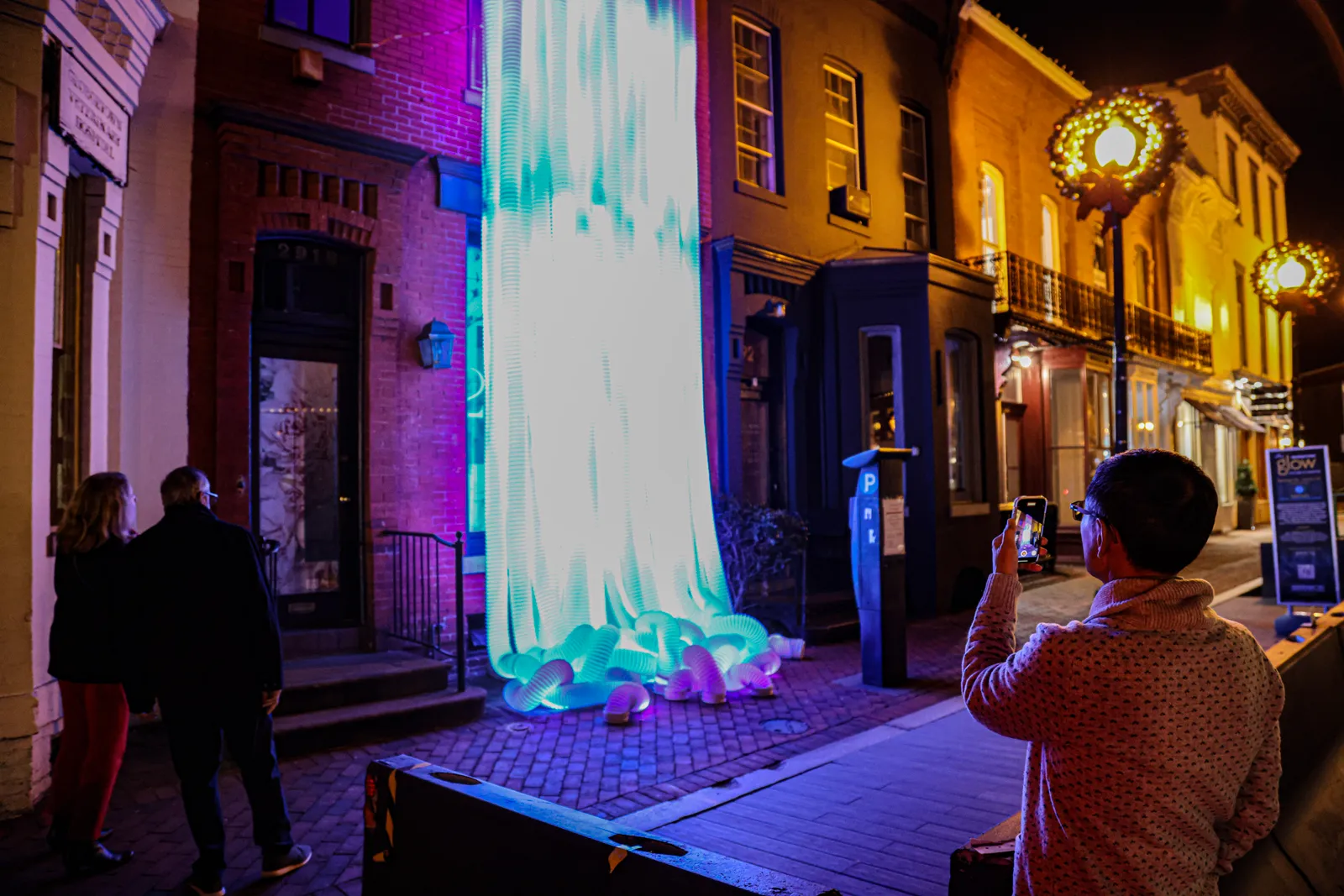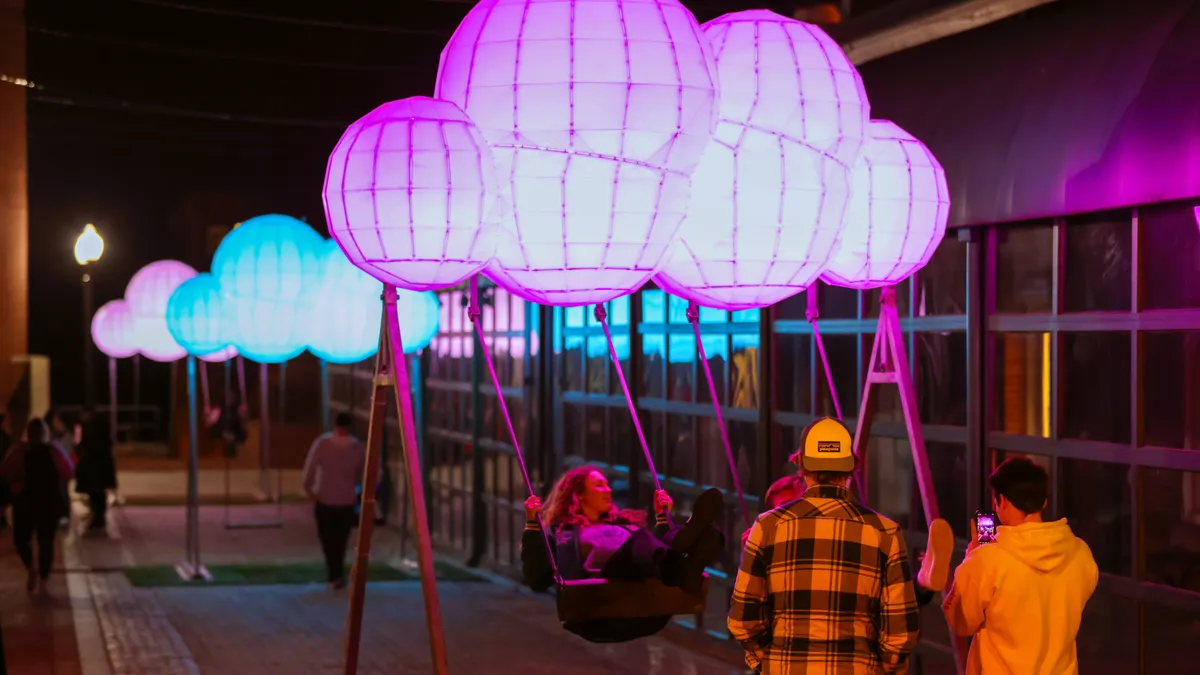Lights displays are cropping up in U.S. cities as local nonprofits, tourism offices and business groups seek to use the public art installations to bring more foot traffic to certain neighborhoods and develop a sense of community.
American cities have a long tradition of using public art to shape local cultural identities, and purveyors of these projects say limited-duration light installations that bridge technology, art and urban design are growing more common. Many light shows are tied to the holidays, but they also aim to promote safety and ensure that urban spaces are used after the sun goes down, particularly in the dark days of winter.
“There is a real movement right now in cities to engage with local artists to design projects that happen in public … and give people a sense of place and destination,” said Laura Zabel, executive director of Springboard for the Arts, a Minnesota-based nonprofit that supports artists.
In Austin, Texas, for example, the annual Creek Show originated in 2014 as a way to keep residents engaged with a long-term public park redevelopment project, which is now entering the second of three phases. Some 60,000 people tend to visit the 10-day Creek Show, which features light installations by Austin artists along Waller Creek. This year, among the eight displays were, for example, luminescent water bottles placed along the creek.
The Creek Show serves as the redevelopment plan’s “biggest public awareness campaign” every year, said Donald Miller, director of programming and events for the Waterloo Greenway Conservancy, the nonprofit running the project.
The group’s full redevelopment vision is “not something we're going to be able to achieve without both public and private support and dollars,” Miller said. “This is our main way of showing people … with a little bit of care and attention, what these spaces can become.”
Georgetown Glow in Washington, D.C., also launched in 2014, after organizers were inspired by a light art display in Lyon, France. There are typically five to seven installations throughout the walking tour each year in the neighborhood, each one costing somewhere between $20,000 to $35,000, said Nancy Miyahira, vice president and marketing director for the Georgetown Business Improvement District, which runs Glow.
This year, Glow features a pseudo-waterfall made of illuminated tubes, six large butterflies and other displays. BID-commissioned research suggests the event yields an economic return, estimating local businesses brought in $8.8 million in additional sales during the 2019 Glow.

“We love having something in the holiday season that gives people a reason to come to Georgetown,” Miyahira said, adding that the project has prompted the BID to consider other ways to support urban art year-round. “Glow has been the foundation of how we've thought about creative placemaking in our neighborhood, and what locations lend themselves to that.”
For other communities, light shows are an economic lifeline. In Pigeon Forge, Tennessee, a town of about 6,400 people, city officials launched Winterfest in 1989 with neighboring towns to ensure residents had work beyond the summer months, when visitors flocked to the nearby Smoky Mountains.
Millions of twinkle lights adorn Pigeon Forge during Winterfest, which now spans three months. This year, the city invested $1.7 million to expand the light show to a 1.2-mile nature trail, said Sue Carr, marketing manager for the city’s tourism department. The new Wonders of Light walking path features lit-up arches as well as flowers, frogs and other light displays, some up to 25 feet tall.
“We needed something new that will continue to bring in those individuals who come every year for the traditions and memories of the Winterfest season,” Carr said. “Our city administration understands that tourism is our livelihood. That’s how we fund everything.”
More light installations may pop up in American cities in the years to come: Miller, Miyahira and Carr all said they’ve heard from organizers in other areas looking to replicate their programs. Social media, they said, has made their displays particularly appealing to the public.
“Public art should be accessible to everybody,” Miyahira said. People who visit light art installations are “getting out there and seeing what artists are saying, and talking about what's going on in the world. There's just that natural curiosity.”
Miller, for one, said Austin’s Creek Show’s staying power comes from its focus on local artists and the city’s shared history.
“What differentiates us is the story we're trying to tell with each installation. It's not just, ‘Let's throw some lights on some random thing,’” Miller said. “The heart of it really is still the art, and the conversation around the histories and landscape of Waller Creek.”










